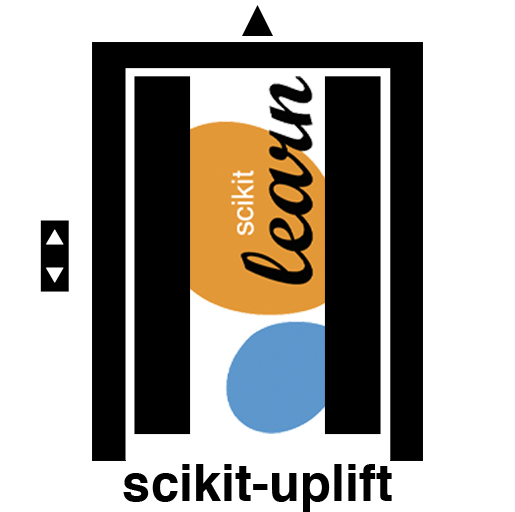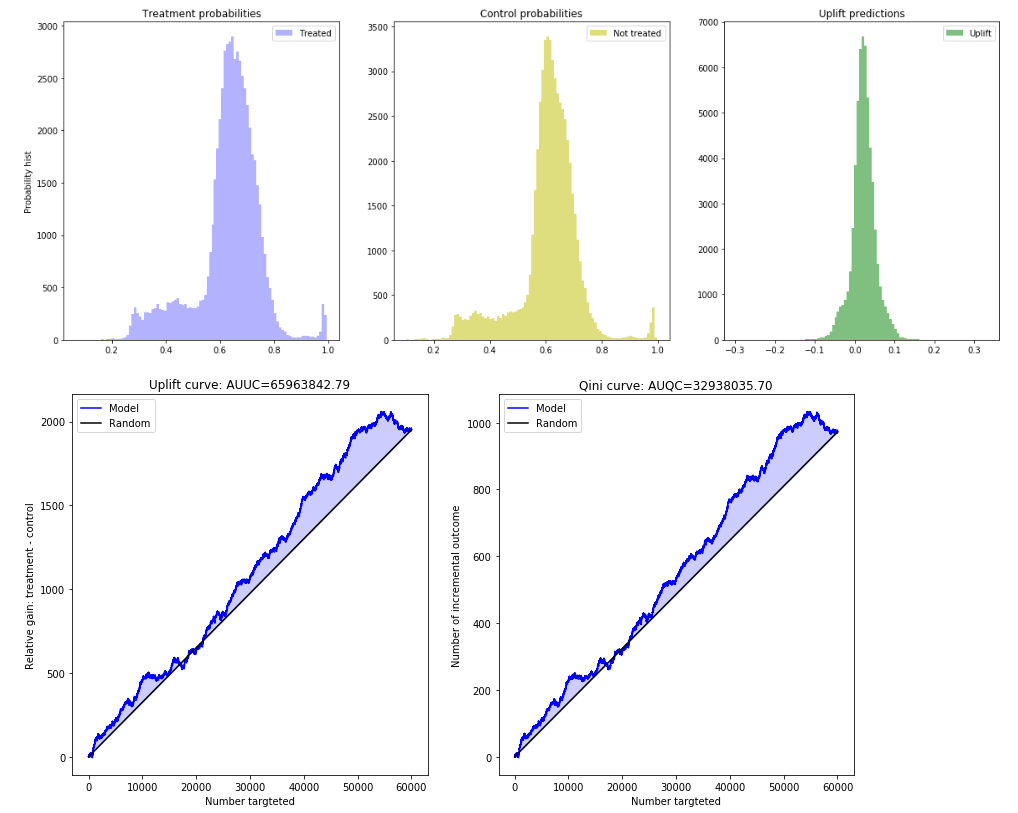scikit-uplift is a Python module for classic approaches for uplift modelling built on top of scikit-learn.
Uplift prediction aims to estimate the causal impact of a treatment at the individual level.
More about uplift modelling problem read in russian on habr.com.
Features:
- Comfortable and intuitive style of modelling like scikit-learn;
- Applying any estimator adheres to scikit-learn conventions;
- Almost all implemented approaches solve both the problem of classification and regression;
- A lot of metrics (Such as Area Under Uplift Curve or Area Under Qini Curve) are implemented to evaluate your uplift model.
Install the package by the following command from PyPI:
pip install scikit-upliftOr install from source:
git clone https://github.com/maks-sh/scikit-uplift.git
cd scikit-uplift
python setup.py installThe full documentation is available at scikit-uplift.readthedocs.io.
Or you can build the documentation locally using Sphinx 1.4 or later:
cd docs
pip install -r requirements.txt
make htmlAnd if you now point your browser to _build/html/index.html, you should see a documentation site.
See the RetailHero tutorial notebook (EN, RU) for details.
Train and predict uplift model
# import approaches
from sklift.models import SoloModel, ClassTransformation, TwoModels
# import any estimator adheres to scikit-learn conventions.
from catboost import CatBoostClassifier
# define approach
sm = SoloModel(CatBoostClassifier(verbose=100, random_state=777))
# fit model
sm = sm.fit(X_train, y_train, treat_train, estimator_fit_params={{'plot': True})
# predict uplift
uplift_sm = sm.predict(X_val)Evaluate your uplift model
# import metrics to evaluate your model
from sklift.metrics import auqc, auuc, uplift_at_k
# Uplift@30%
sm_uplift_at_k = uplift_at_k(y_true=y_val, uplift=uplift_sm, treatment=treat_val, k=0.3)
# Area Under Qini Curve
sm_auqc = auqc(y_true=y_val, uplift=uplift_sm, treatment=treat_val)
# Area Under Uplift Curve
sm_auuc = auuc(y_true=y_val, uplift=uplift_sm, treatment=treat_val)Vizualize the results
# import vizualisation tools
from sklift.viz import plot_uplift_preds, plot_uplift_qini_curves
# get conditional predictions (probabilities) of performing a target action
# with interaction for each object
sm_trmnt_preds = sm.trmnt_preds_
# get conditional predictions (probabilities) of performing a target action
# without interaction for each object
sm_ctrl_preds = sm.ctrl_preds_
# draw probability distributions and their difference (uplift)
plot_uplift_preds(trmnt_preds=sm_trmnt_preds, ctrl_preds=sm_ctrl_preds);
# draw Uplift and Qini curves
plot_uplift_qini_curves(y_true=y_val, uplift=uplift_sm, treatment=treat_val);We welcome new contributors of all experience levels.
- Official source code repo: https://github.com/maks-sh/scikit-uplift/
- Issue tracker: https://github.com/maks-sh/scikit-uplift/issues
- Gutierrez, P., & Gérardy, J. Y.
- Causal Inference and Uplift Modelling: A Review of the Literature. In International Conference on Predictive Applications and APIs (pp. 1-13).
- Artem Betlei, Criteo Research; Eustache Diemert, Criteo Research; Massih-Reza Amini, Univ. Grenoble Alpes
- Dependent and Shared Data Representations improve Uplift Prediction in Imbalanced Treatment Conditions FAIM'18 Workshop on CausalML
- Eustache Diemert, Artem Betlei, Christophe Renaudin, and Massih-Reza Amini. 2018.
- A Large Scale Benchmark for Uplift Modeling. In Proceedings of AdKDD & TargetAd (ADKDD’18). ACM, New York, NY, USA, 6 pages.
- Athey, Susan, and Imbens, Guido. 2015.
- Machine learning methods for estimating heterogeneous causal effects. Preprint, arXiv:1504.01132. Google Scholar
- Oscar Mesalles Naranjo. 2012.
- Testing a New Metric for Uplift Models. Dissertation Presented for the Degree of MSc in Statistics and Operational Research.
- Kane, K., V. S. Y. Lo, and J. Zheng. 2014.
- “Mining for the Truly Responsive Customers and Prospects Using True-Lift Modeling: Comparison of New and Existing Methods.” Journal of Marketing Analytics 2 (4): 218–238.
EN: uplift modeling, uplift modelling, causal inference, causal effect, causality, individual treatment effect, true lift, net lift


